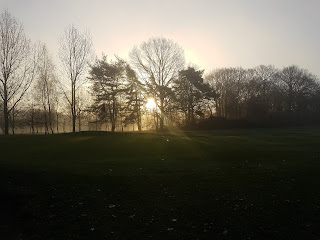Last Thursday we were subjected to a Storm named Doris,
I'd just like to take you through some of the clean up operations that have
& will be taking place to clear up the golf course.
I'm not sure if it's since the Met Office started naming
storm's that were more aware of them, if that's possible, but we certainly seem
to be getting more of them..
This is the first time we have lost a significant number
of trees due to a storm in quite a while, after Thursday we lost poplars in
between the 10th & 16th, alongside the 4th boundary line & the 6th
boundary and a poplar on the 13th tee has also gone. Added to this a lot of
debris, again mostly off poplars & silver birch.
The number of mature poplars we have on the course, and
their height, means it is inevitable in strong winds some will suffer damage
and ultimately fail. We have seen evidence of that on Thursday. That is why
continuing with a woodland management program focusing on developing stable,
mixed aged species of woodland will enable the continuation & growth of the
woodland areas around the golf course.
So onto the clean up. In terms of time & manpower it
takes about 5 men working 7 hour days each to clean up after 1 large tree. Bearing in
mind we lost 6 tree's in the storm that means the focus for the forthcoming
week will be mainly based around clearing debris.
Why does it take so long? The tree's have to be cut up
and made safe & manageable before we can start the clear up. We then use
our chipper to reduce the amount of volume we have to move across the golf
course. The chippings will be used as a base for our dumping site & some
will be incorporated into compost production. One average size tree will
produce about 10 tonnes of chippings, quite a lot but much easier to move
chippings around the course the more heavier bulk material. From an
environmental impact it also reduces our reliance on burning material.
Once the debris has been cleared away the stump will need
to ground out and the area will be over seeded or filled with cores.
Also to deal with is the amount of branches, limbs,
twigs & leaves that have been deposited across the golf course. This will
rely on old fashion methods of picking up with, namely Greenkeepers and their
hand's... We will use blowers & some machinery but must will be picked up
by hand.
Does this have an impact on what other works are carried
out on the golf course? Obviously some things that were planned for this coming
week will now be put back but clearing up & maintaining a level of
presentation on the course is paramount. And when mother nature decides to
blow, there's very little we can do.
Apart from wonder who gets to choose the
storms names.......











































